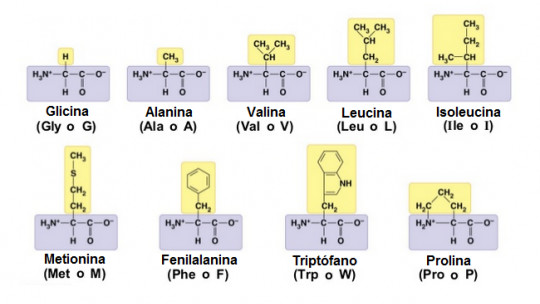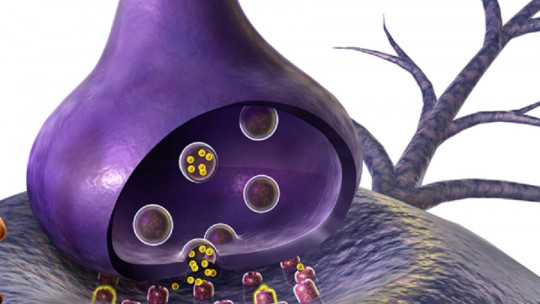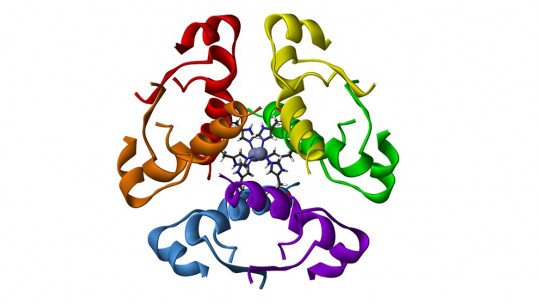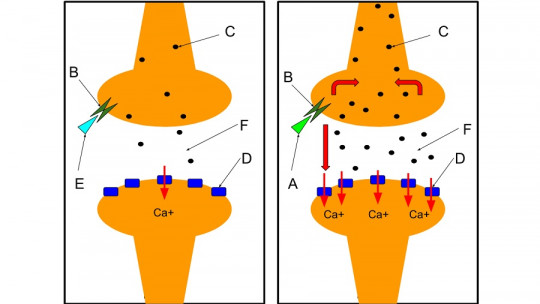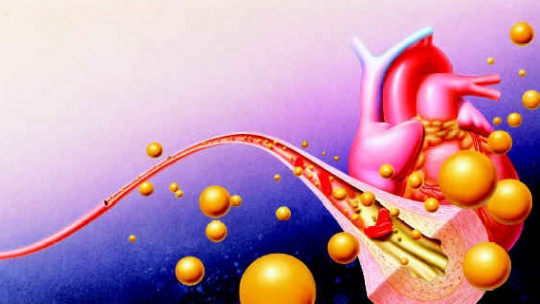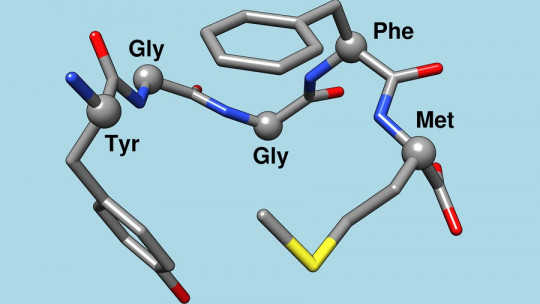
Enkephalins are an endogenous opiate pentapeptide that participates in many of the body’s regulatory functions, being especially linked to the reduction of pain sensation.
In this article We will talk about enkephalins and we will see what type of molecule they are, what are their main functions in the body what types exist and how their release increases.
What are enkephalins?
Enkephalins are a type of endogenous opiate pentapeptides. Peptides are molecules formed by a set of amino acids, in the case of enkephalins being pentapeptides there will be 5, joined by peptide bonds, hence the name. Opioids refer to molecules that act as analgesics for the nervous system, have a calming function. Finally, the term endogenous indicates that it is the human body that produces them.
Within the group of endogenous opiates we find other types, such as endorphins and dynorphins. In general, this group of opiates act in the generation of inhibition responses that people carry out and in the sensations of pleasure, since they participate in the reinforcement circuit. Likewise, they also act in the regulation, stability, of body temperature, breathing and cardiovascular response and in the correct functioning of memory and attention.

As happens with other types of molecules, must interact with a receptor located on a cell to produce the effect In the case of enkephalins, they bind to the kappa, mu and delta receptors, which are the main receptors for opiates. Enkephalins are produced in the pituitary gland, a gland of the central nervous system that participates in the endocrine system, that is, in the correct functioning of hormones, and is transmitted to different areas of the body, both in the brain, such as the adrenal medulla or the digestive tract. digestive.
The adrenal medulla has the function of producing neurotransmitters such as adrenaline and norepinephrine that are responsible for the transmission of nerve impulses. On the other hand, the intestinal tract, which is located outside the central nervous system, is responsible for the functions of ingestion, digestion, absorption of necessary substances and excretion. In this way, the enkephalins will not be in constant operation, but can be stored until their intervention is necessary.
Main functions of enkephalins
What are these molecules for? Next we will see its main functions in the body.
1. Induces a state of relaxation
The main function of this peptide is to relax, calm, in short, reduce body activation In this way, it has a depressant function in the central nervous system, made up of the brain and spinal cord, which is the main director of our body.
2. Decreased pain
As we have already seen, enkephalins are involved in different bodily processes, but it is in pain control where this molecule shows the greatest impact.
Physical pain is a sensation that arises in our body, which makes us stay alert and act to combat the cause that causes us discomfort. In this way, we can consider that pain has an adaptive function, since it makes us act and motivates us to restore our state.
Both an input and output circuit act on the sensation of pain We mean that at first the damage produced in a part of the body activates the nociceptors (pain receptors) that send a signal to the central nervous system, specifically to the spinal cord, which transmits the information to the brain to generate the sensation of pain. pain and retransmit the information to the damaged area so that it acts. Well, enkephalins are responsible for regulating this pain signal that reaches the spinal cord, so that it is not too intense and allows us to act.
In situations in which the pain is so high that feeling it is no longer functional, it does not favor survival, the body itself inhibits this sensation so that we can seek help or get to safety
3. Other functions of enkephalins
Although the most notable function of enkephalins is the reduction of the sensation of pain, it is also involved in many other functions of our body. It is very important to maintain the homeostasis of our body, that is, maintaining the balance of different body processes, such as breathing, heart rate, body temperature or even the amount of glucose in the blood.
Also They help increase the creation of new cells, reduce the feeling of stress and restore the state of the immune system after his performance. Likewise, it is involved in the function of some substance addictions, helping to generate the pleasurable and reinforcing effect. In short, we realize that in general the role that enkephalins play is the recovery and restoration of balance in the physical and mental state.
The different types of enkephalins
The peptide molecule of endorphins is made up of five amino acids, hence it is called pentapeptide. Of this combination of amino acids, four of them are repeated in the same way in all enkephalins but the fifth shows distinction according to the type of molecule.
Thus, we can talk about: methionine-enkephalin, which has methionine as a distinctive amino acid (it has been discovered as a powerful antioxidant), and leucine-enkephalin, in which the different amino acid will be a leucine (essential for the repair and maintenance of the muscle tissue).
How to increase the release of enkephalins
Now that we know better the main characteristics of enkephalins and the functions they perform in our body, we see the need to act to try to increase their production or, if action is required, to have reserves of this molecule. Below we will mention some activities that we can carry out in our daily lives to facilitate the release of this type of peptide.
1. Play sports
It has been observed that Practicing sports helps to increase the release of endogenous opiate peptides, enkephalins being one of them By exercising regularly we increase the production of these molecules, helping to recover and restore the body’s state and producing a paradoxical sensation of energy. Despite having gotten tired from practicing sports, the body sensation we have is more energetic.
Sport is good for both our mental and physical health. Try to establish an exercise routine that is affordable. The intention is not to get very tired on a single day, but to be able to exercise continuously.
- You may be interested: “How to enjoy sports without suffering from the results?”
2. Laugh
The positive state, laughing, has also been linked to an increase in opiate peptides. We know that life involves many responsibilities, many areas where we must dedicate time, but it is also important that we have time for ourselves, to do things we like and thus be able to enjoy. These moments are what will help us reduce our stress level and to keep our body stable.
3. Relaxation exercises
As we have seen, enkephalins have a depressant function in the body, that is, they decrease its activation. In this way, the practice of activities that increase our state of relaxation such as yoga, meditation, Mindfulness, breathing techniques… will help increase the release of opiate peptides
The different relaxation exercises show different practices, thus adapting to different tastes. Try the different proposals and choose which one is most similar to your preferences.
- Related article: “6 easy relaxation techniques to combat stress”
4. Interpersonal contact
Physical contact with other people (whether through hugs, kisses, caresses…) also favors the increase in the production and release of peptide molecules We can relate this point to taking time for ourselves, disconnecting from the fast-paced and stressful life and sharing, spending time, with the people we love.
5. Music
Any activity linked to music, whether listening to it, dancing to it or singing to it, has been related to an increase in enkephalins and other endogenous peptides. It depends on the type of music; If it is relaxed, there is a decrease in bodily activation both breathing and heart rate.
6. Artistic activities
Carry out activities such as drawing, painting, making ceramics… Artistic and creative practices are linked to an increase in the release of endogenous peptides and an improvement in a more relaxed body state and greater sensation of pleasure.
7. Food consumption
It has been observed that The consumption of some foods helps increase the release of endogenous opiate peptides Examples of these foods are: some fruits such as pineapple, banana, strawberry or avocado; chocolate (the one with the highest percentage of cocoa being better); dairy products such as yogurt; the seaweed; fish rich in Omega 3, such as salmon, sardines or tuna; legumes; and some nuts such as walnuts and peanuts.

